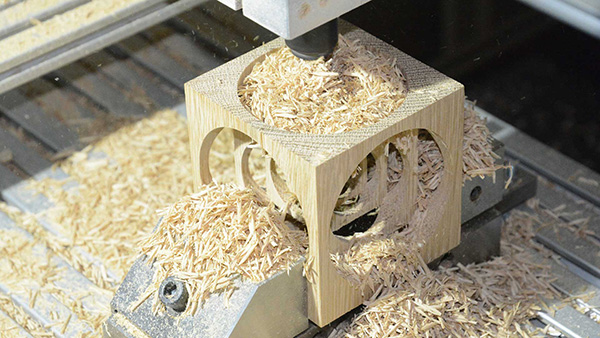You are familiar with different metals used in CNC machining, but how about wood? Many machinists often commit the mistake of thinking of wood as an easy to machine material because it is soft. Half of it is true. You can program a much higher feed rate on the machine with wood than those of any other metals. However, wood has several unique properties too, that you need to consider so that you can have maximum efficiency when you use the CNC machine.
Here are the properties of wood that you need to consider when you use CNC machining for your projects that demand the use of wood.
Wood Types
There are three main categories of wood that you need to know. They are hardwood, softwood, and engineered wood.
- Hardwood – It is your standard definition of wood that refers to the angiosperm which is also known as a broadleaf tree. Some of the classic examples are birch, oak, and maple trees. These types of wood are often used in furniture, flooring, decks, and construction materials.
- Softwood – This type of wood is from coniferous trees or gymnosperm. They are less dense than hardwood and are easier to machine. It is typically used in furniture, paper products, and windowpanes or doors. A classic example of softwood is cedar and pine trees.
- Engineered Wood – these are typically composite wood made from wood fibers, strands, and particles that are bound together using an adhesive. This adhesive can be abrasive and they can cause premature tool wear and makes it difficult to machine. There are engineered woods that are even more difficult to machine because they contain more binding materials than the rest. To make them viable, the CNC machine is usually programmed with less aggressive feed and speed.

CNC machines wood working*
Other Properties of Wood to Consider
Aside from the types of wood, there are also other factors to consider when using CNC machining on a woodworking project. It includes the following:
Grain Size
Wood is considered as a natural compound material since it contains flexible and string cellulose fibers that are held together by natural binding material. If you think of wood in the context of construction, the wood fibers would be the steel bar and the binding material (lignin and hemicellulose) would be the concrete.
Wood that contains large cellulose fibers is considered as coarse-grained while the one with smaller or sparse fibers is called fine-grained. Oak and ash are coarse-grained and pine and maple are fine-grained wood.
Fine-grained wood is where your softwoods belong and therefore, they are easier to machine as they do not have many fibers that shear.
Moisture Content
Another important factor to consider in wood is moisture content. The most common problem when building with wood is warping. It happens when the moisture content is not taken into account which an increase or decrease can disturb the shape of the part. Also, higher moisture content can cause rapid tool wear.
Knots
It refers to the portion of the branch or limb that is incorporated on the trunk. Knots can affect the mechanical properties of the wood because it disrupts the continuity of the direction of the wood fibers. The areas around the knot are usually weak and are prone to cracking. In CNC machining, the knotted portion of the workpiece is subjected to reduced machining properties to prevent shock loading.
Conclusion
There you have it, the factors that affect the efficiency of using wood as a workpiece for CNC machining. Remember to include them when deciding what manufacturing process to use when your project requires you to use wood.
Reference
*Image from https://www.fcasnc.com/
